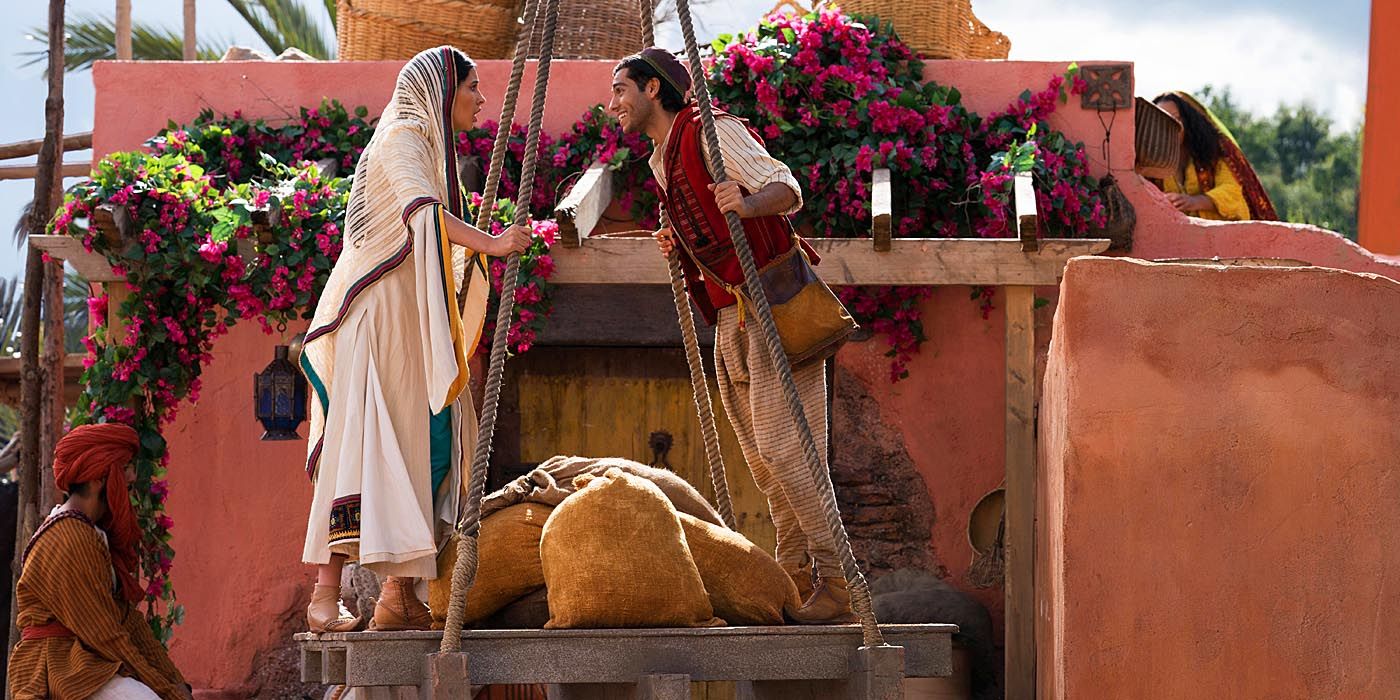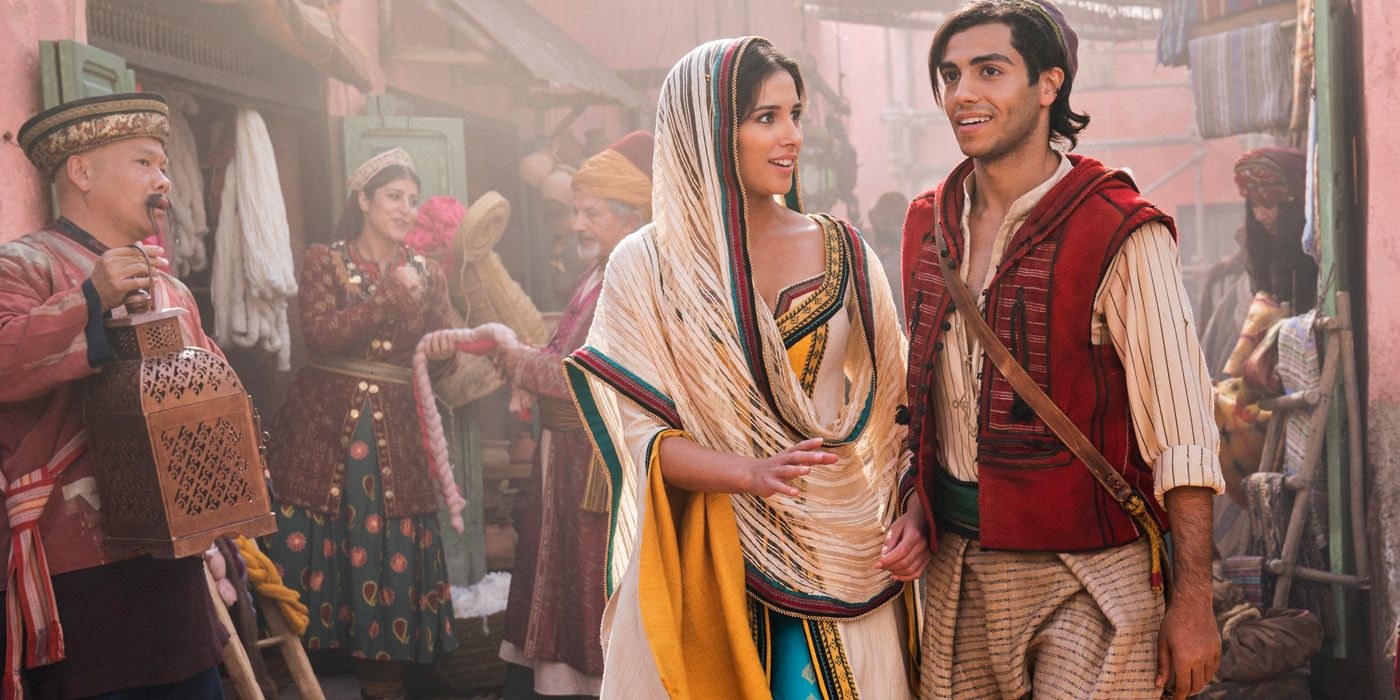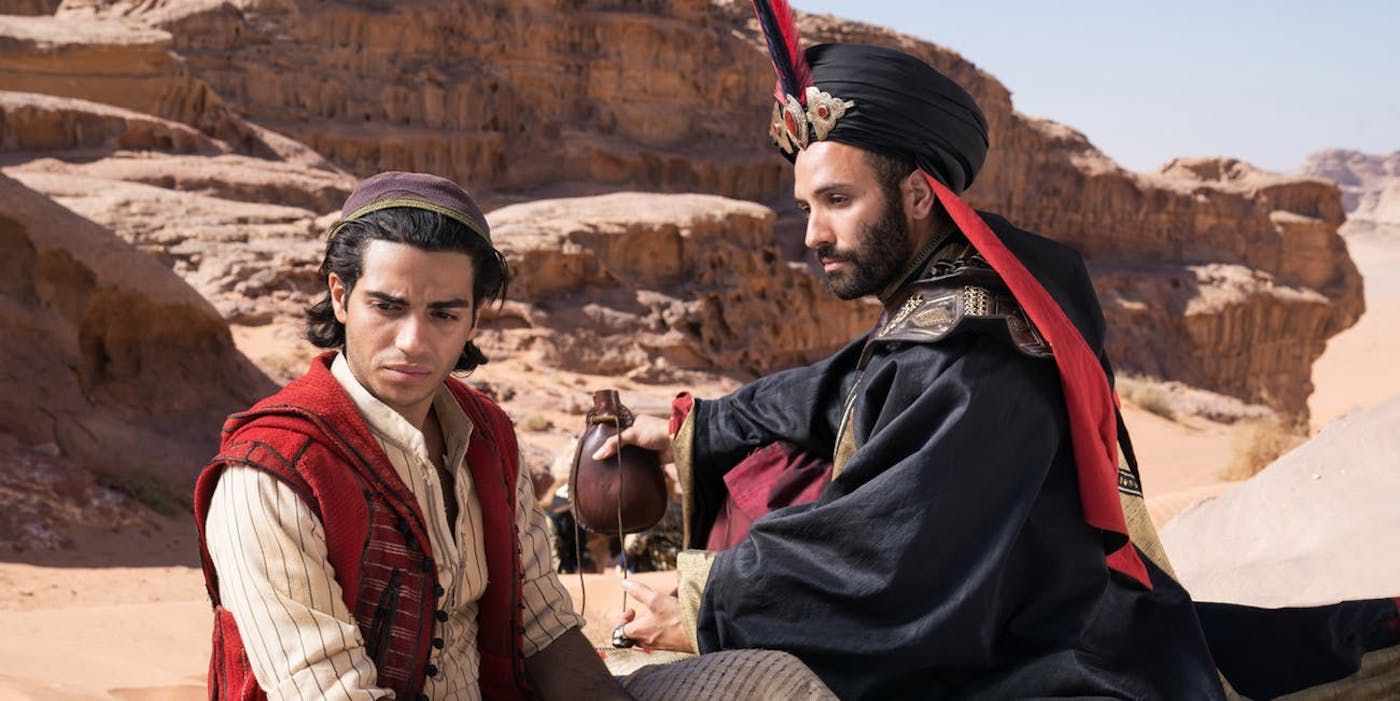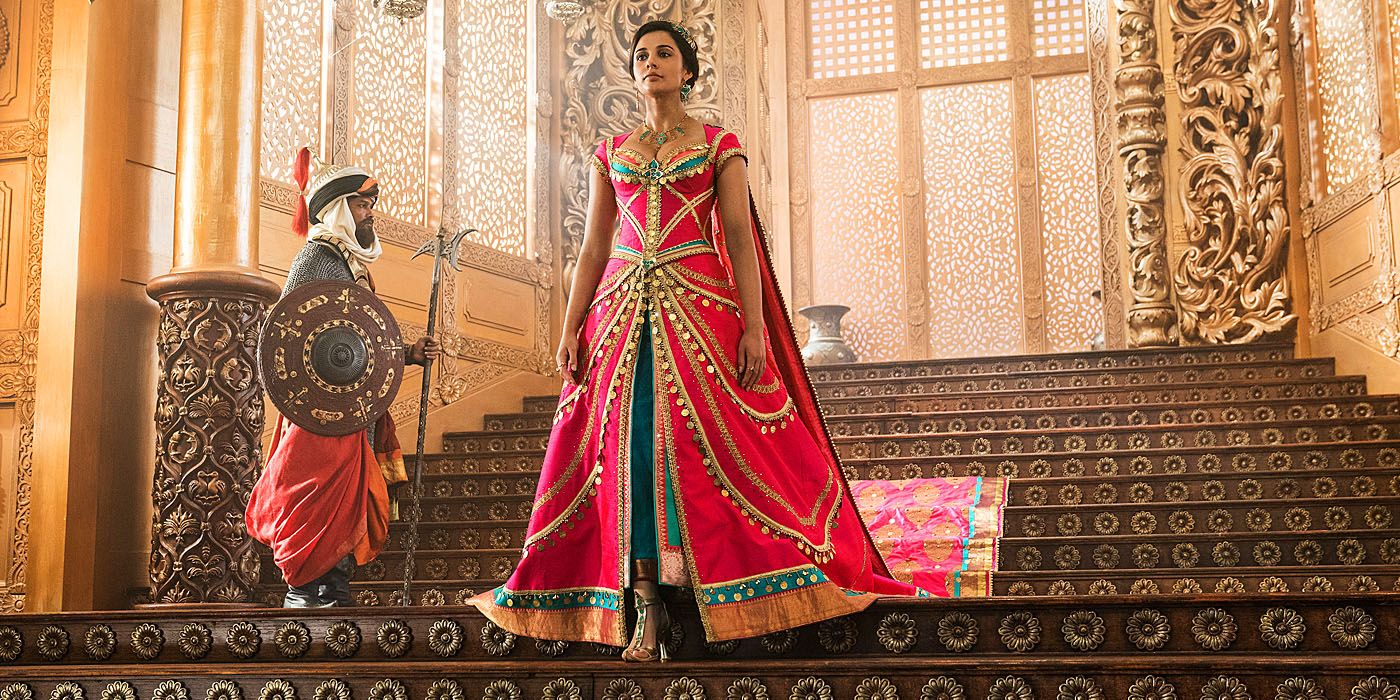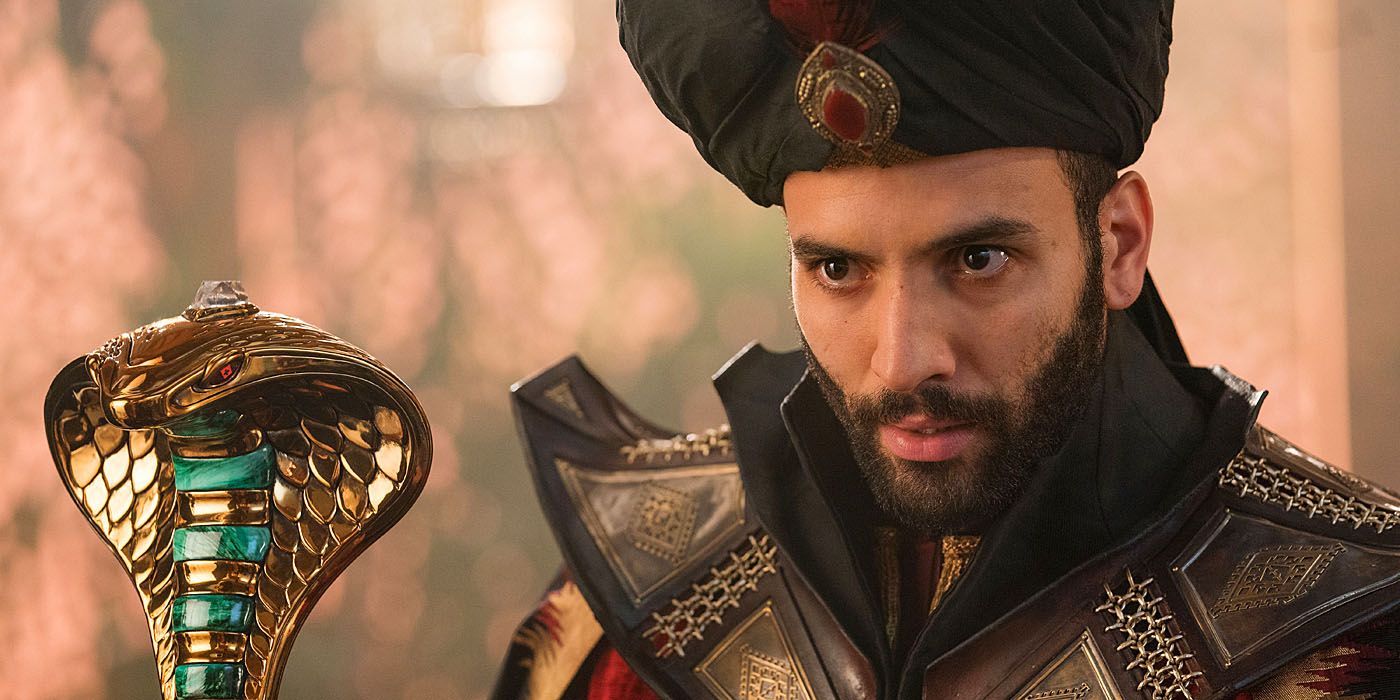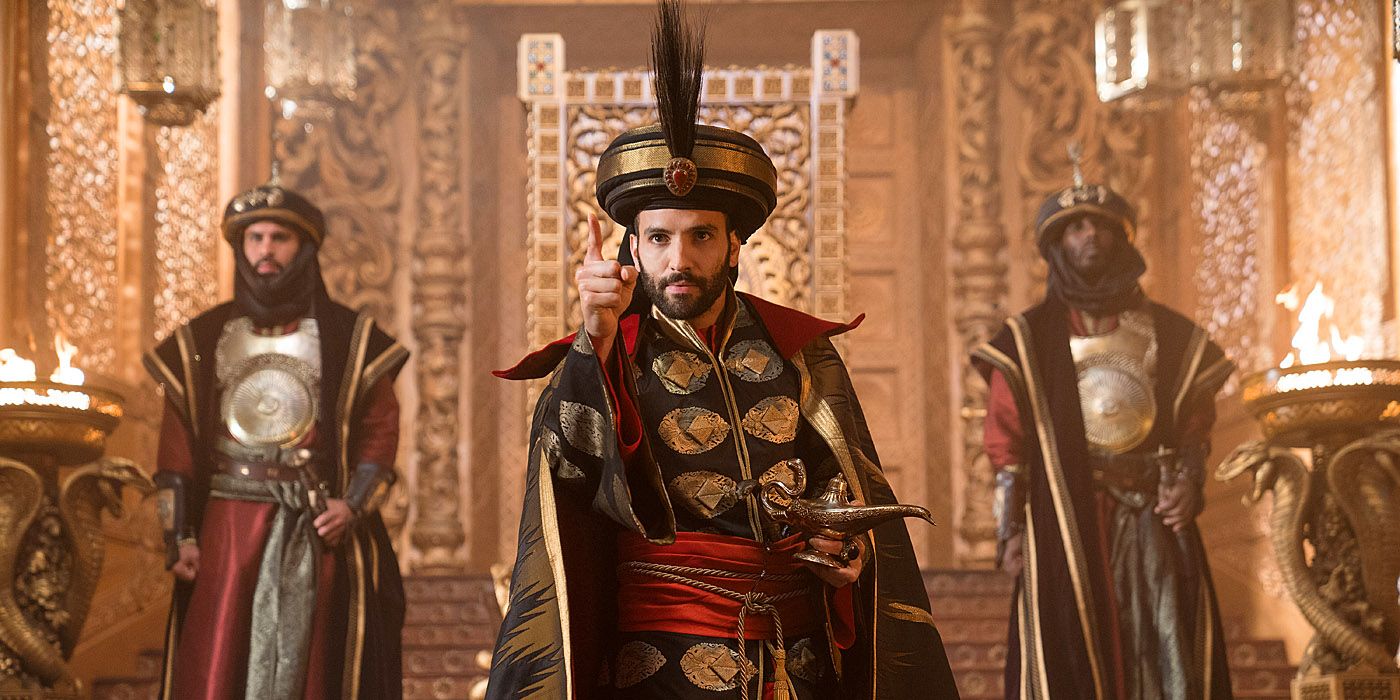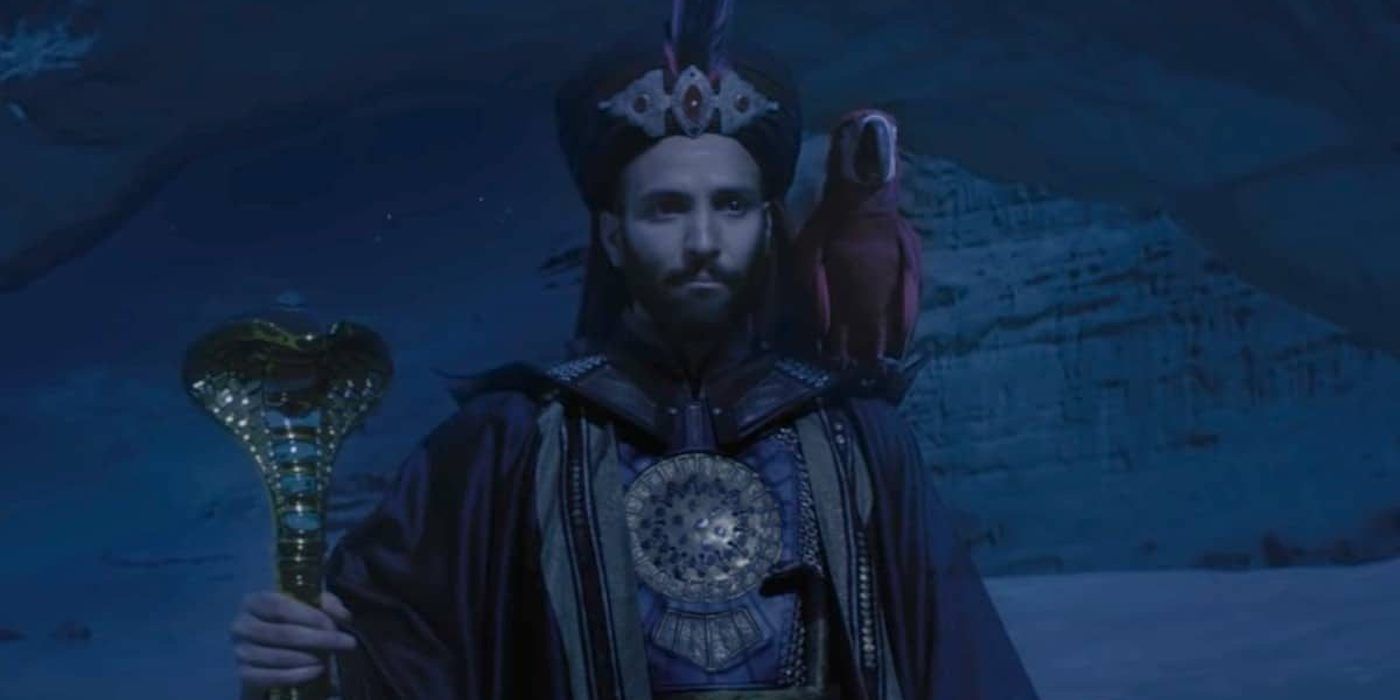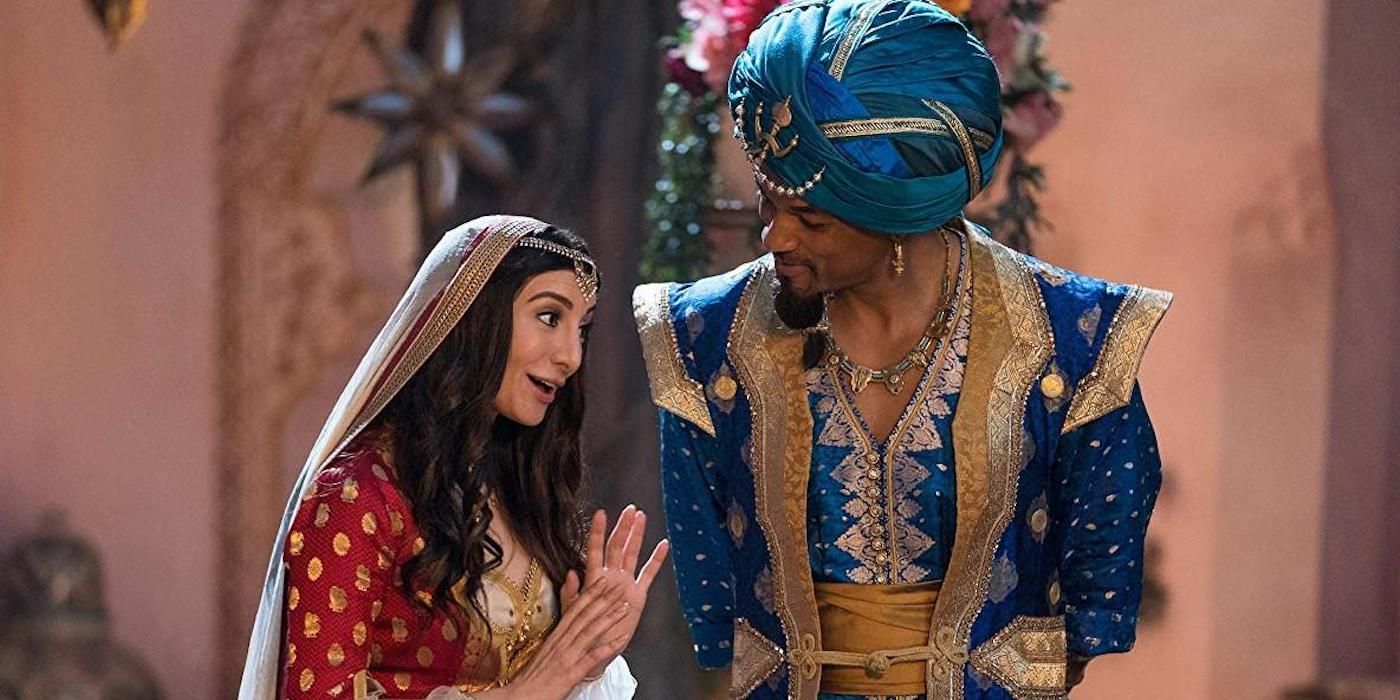WARNING: The following article contains spoilers for Disney's Aladdin, in theaters now.
Disney's live-action adaptation of Aladdin honors the magic that made the 1992 animated movie such a classic. Director and co-writer Guy Ritchie sticks to the main plot of street urchin Aladdin attempting to woo Princess Jasmine by fooling her into believing he's Prince Ali, all while Jafar schemes to steal the lamp and use the Genie's powers for himself.
However, while the broad strokes remain the same, there are some deviations in terms of subplots and character arcs that set the movie apart from its predecessor, and update the story for a contemporary audience.
LOVE AT FIRST SIGHT
In the original, Aladdin and Abu spot a disguised Jasmine giving food to poor children in Agrabah's market. She runs afoul of the vendors, and she's accosted by guards, who might have chopped off her hands if not for Al's intervention. Subsequently, she pretends to be his crazy sister and they run away, evading the soldiers and spending an afternoon together. That is, until the guards arrive, and Jasmine must reveal her identity to save Al.
Ritchie's live-action adaptation, in that Aladdin rescues Jasmine and they go on the run, without pretending she's insane. However, when she sees a suitor coming to the palace she departs, and doesn't let Al know who she really is. She instead claims she's a handmaiden, only to end up angry that Al stole her mother's bracelet (Abu is actually to blame). Jasmine never reveals her identity because the guards never catch her with Al; she also isn't sure whether Al really likes her.
JAFAR'S RECRUITMENT DRIVE
In the 1992 original, Jafar uses a magic cauldron to find the "diamond in the rough," the thief who could enter the Cave of Wonders and steal the lamp. After his guards capture Aladdin, Jafar lies and claims he beheaded the boy, when actually he disguises himself as an old man and hires Al in the dungeon to steal the lamp in exchange for riches to impress Jasmine.
Ritchie's version has Jafar hiring Al when Iago spots the thief performing parkour and sneaking through the palace to court Jasmine. Somehow, they figure out he's the "diamond" and use him for the heist. Jafar doesn't don a disguise, but pretends to be Al's friend. Jafar promises money to Al so he can woo the princess, just after he reveals the truth about the identity of the young woman from the marketplace.
JASMINE AS A FEMINIST POLITICIAN
Princess Jasmine didn't have much agency in the original, as she simply sought to run away to escape an arranged marriage. Other than that, her main arc focused on her romance with Prince Ali, figuring out if he was worth falling in love with.
She's a much more nuanced character this time around, as she's portrayed as proponent for social justice. Jasmine wants to become Sultan to bring peace to Agrabah and to better society. She also wants to end Jafar's war-mongering, while elevating the status of women, as seen with her endearing rendition of the new song "Speechless." In addition, she's a scientist driven by her mother's death, two plot points that also weren't in the original.
JAFAR'S SECOND LAMP HEIST
After Aladdin reveals in the animated original that Jafar is a crook, the villain escapes to his lair, and has Iago secret the lamp from Al's quarters. He then brings the Genie to life, and begins plotting his reign of tyranny.
Here, when Jafar is exposed in the live-action adaptation, the Sultan orders him imprisoned. However, he doesn't need Iago's help, as he escapes his cell and uses his expertise as a pickpocket to sneak the lamp out of Al's pocket on the streets. Then and there, he summons the Genie, who realizes he now has the evil master he never wanted.
THE ROYAL REBELLION
When Jafar becomes Sultan using his first wish in this film, Ritchie adds a new scene involving a rebellion inside the royal quarters. Jasmine's father no longer has his regal wear, and the newly minted Sultan Jafar instructs his guards to take Jasmine and her father to jail, forcing the soldiers to turn on the royal family.
But in a moment of heroism, Jasmine makes her speech about rising up against oppression, inspiring the guards led by Hakim to wake up and betray Jafar. The princess rallies them to attack the villain, only to be magically banished to the cells themselves. It's a dramatic but powerful moment that reinforces Jasmine's warrior spirit and suitability to rule the kingdom.
IAGO'S MONSTROUS TURN
In the 1992 original, Jafar attempts to persuade Jasmine to marry him, and goes so far as to dress her in a sexed-up outfit. She only kisses Jafar to distract him while Al tries to steal the lamp in a particularly creepy scene, as she was only 16. Iago, however, acts as a surveillance device, and notifies his master of the attempted theft, which leads Jafar to unleash his powers upon the heroes.
Here, Ritchie smartly cuts the creep factor and, during a forced wedding ceremony, Jasmine steals the lamp and escapes with Al, Abu and Carpet. However, Iago pursues them and, thanks to his second wish to become a powerful sorcerer, Jafar turns Iago into a beast-like parrot, similar to a dragon from Game of Thrones. Iago rampages through Agrabah, and eventually obtains the relic for his owner. Sadly, Iago isn't as talkative as he was in the original, in which he was voiced by Gilbert Gottfried. Instead he merely repeats phrases like a real parrot.
THE HAPPY ENDING
The animated movie concluded with Jasmine's father repealing the law, and permitting his daughter to be with Aladdin. Al also frees Genie with his final wish, allowing him to roam the world. Everyone received happily-ever-after ending, as Al and Jasmine began planning a new life together.
Ritchie switches it up by having Genie, now permanently in his human form, embarking on a romance with Jasmine's handmaiden, Dalia. They sail the seas together, along the way getting married and having children. Jasmine'sfather makes her Sultan, and she changes the law herself so that she can marry Al. It's a much more triumphant and romantic ending, and it also breaks barriers, with Jasmine becoming the leader we knew she could be.
Directed by Guy Ritchie, Aladdin stars Mena Massoud as Aladdin, Will Smith as Genie, Naomi Scott as Princess Jasmine, Marwan Kenzari as Jafar, Navid Negahban as the Sultan of Agrabah, Billy Magnussen as new character Prince Anders, and Frank Welker and Alan Tudyk as the voices of Abu and Iago, respectively.

